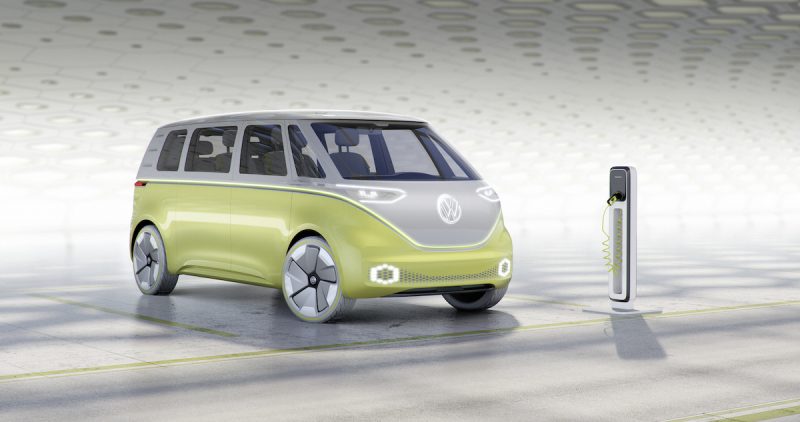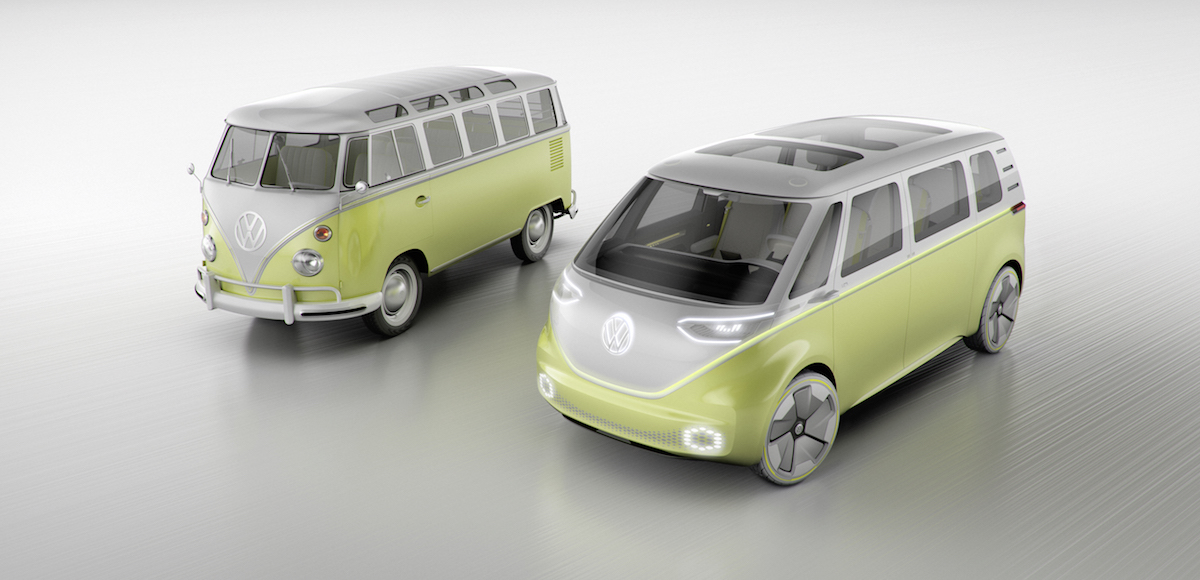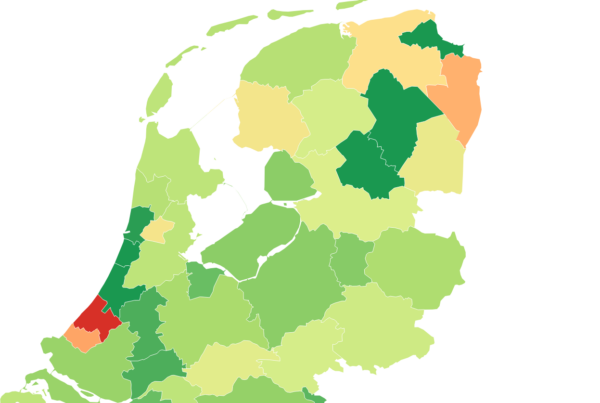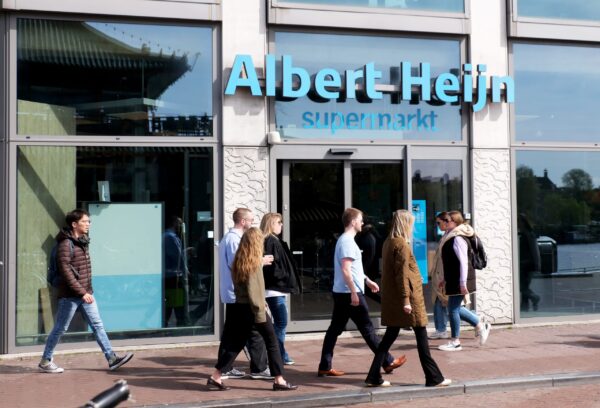Volkswagen is putting a high-tech twist on its classic microbus.
The German automaker unveiled an electric microbus concept at the Detroit Auto Show on Monday. But this isn’t the first time Volkswagen has given its beloved microbus a futuristic facelift – Volkswagen also unveiled a microbus concept at last year’s Consumer Electronics Show.
Scroll down for a closer look at the microbus’ evolution:
The very first Volkswagen Microbus went into production in 1950. Formerly known as the Type II or Kombi, the beloved bus is largely known as a symbol of the counterculture movement.
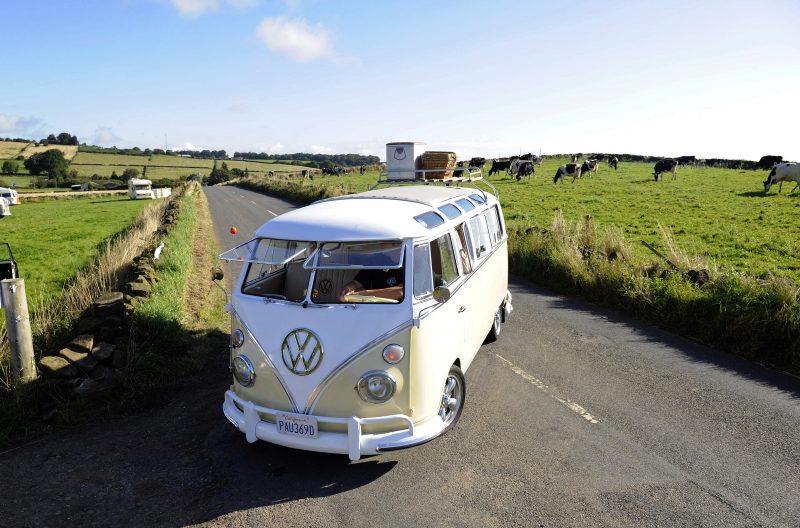
Around 3.5 million microbuses were made before Brazil ultimately became the last country to end production in 2013. Volkswagen said at the time it was the longest-produced model in the auto industry.
Volkswagen unveiled a new and improved concept version of the beloved microbus at CES in 2016. The electric minibus, called the BUDD-E, is capable of getting up to 373 miles on a single charge, Volkswagen said at the time.
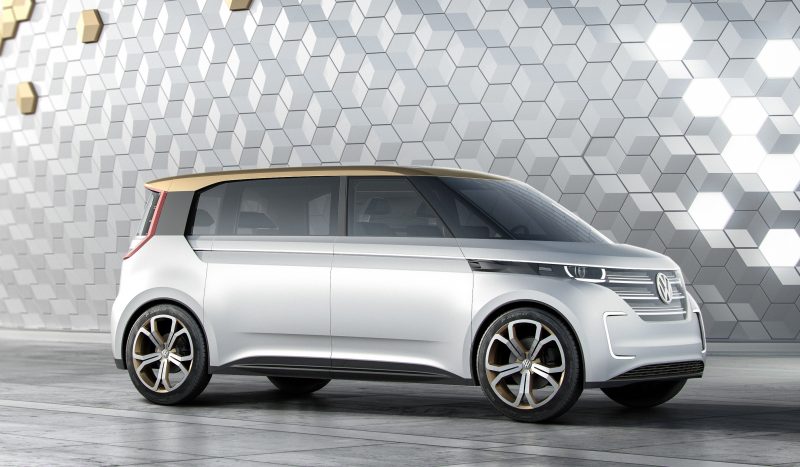
The BUDD-E also came with other high-tech features, like doors that open with the wave of a hand and touchscreen displays with gesture control.
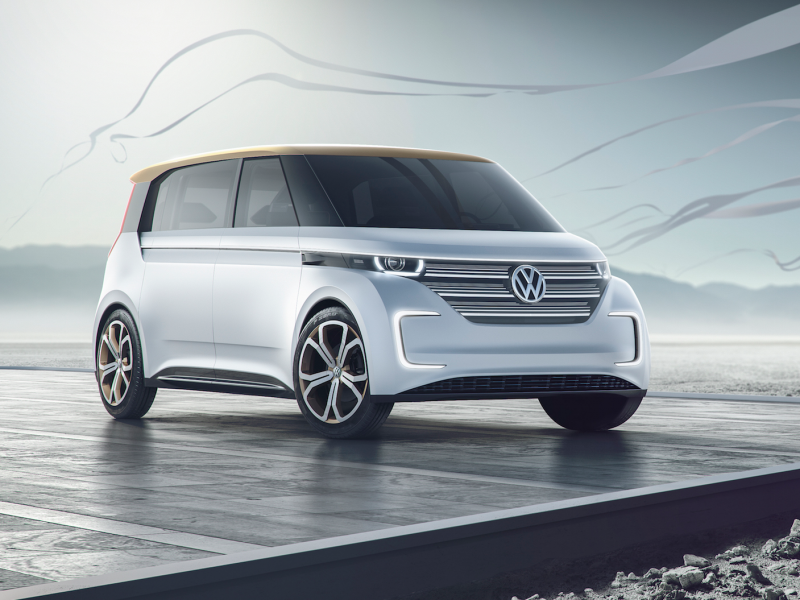
Now Volkswagen is back with a new microbus concept that is also electric. That fits in with Volkswagen's goal to release 30 electric or hybrid vehicle models by 2025 — an aim made in response to the Volkswagen emissions scandal. Volkswagen says it will launch its "electric offensive" in 2020.
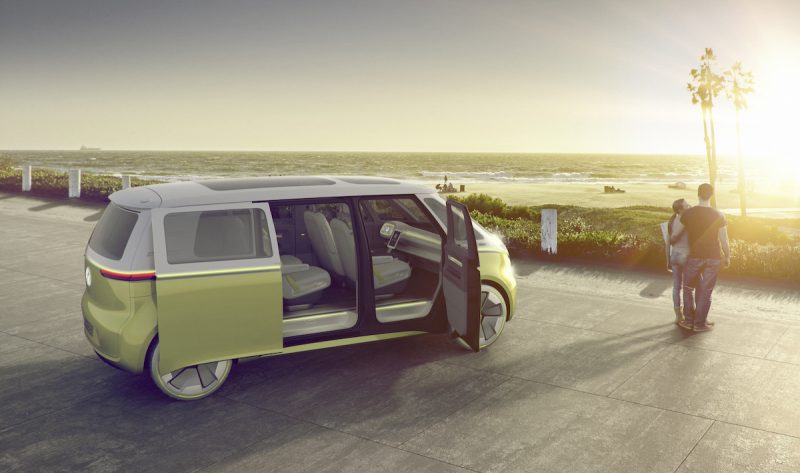
The new bus concept, called the I.D. Buzz Concept, can drive up to 270 miles on a single charge, Volkswagen claims.
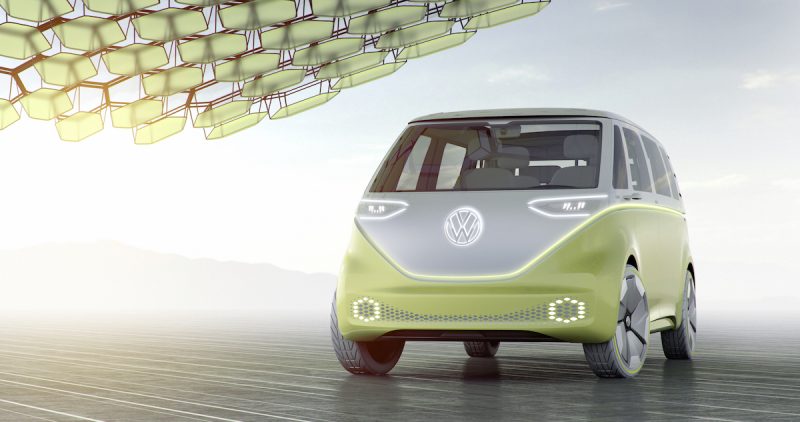
Like the BUDD-E, the latest Volkswagen concept is based on the company's Modular Electric Driving Kit (or MEB) that will be exclusive to Volkswagen vehicles. The I.D. Buzz offers ample interior space because it is built on a modular battery structure, Volkswagen said.
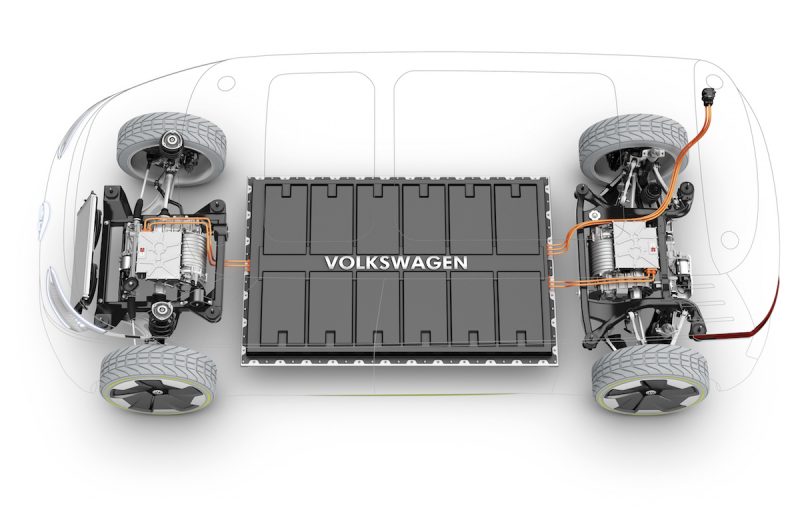
The vehicle is also fully self-driving thanks to lidar, radar, ultrasonic sensors, and cameras. Volkswagen also said the concept collects traffic data in real-time to aid its autonomous efforts.
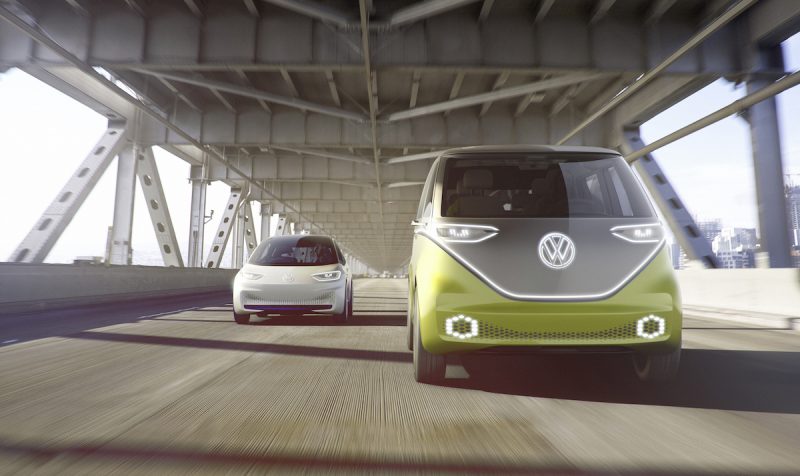
Automakers are ramping up their data collection efforts to advance their self-driving tech. Cars compare real-time data on traffic flow to high-definition maps of roadways so they can detect obstacles or potential hazards easier. The more data there is to pull from, the better the cars can navigate complex roadways or intersections.
The steering wheel can retract into the instrument panel when autonomous mode is activated. The driver can turn the self-driving mode off by touching the steering wheel or pressing the brake or gas pedals.
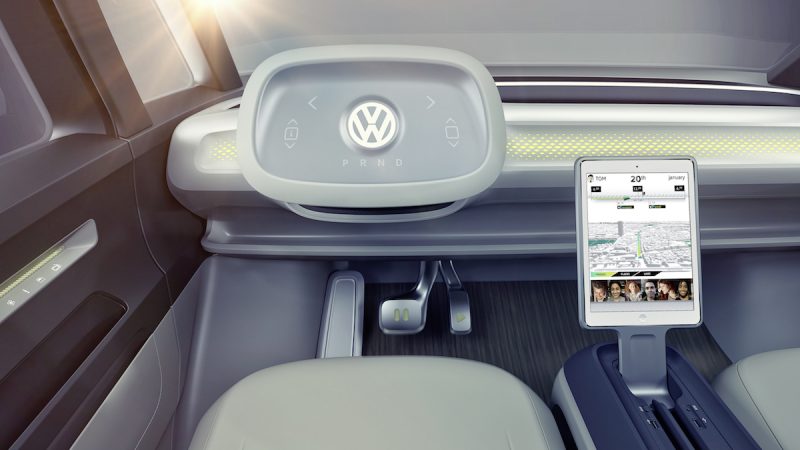
The concept also comes with a heads-up display to project information on the windshield. The center console offers traditional navigation and entertainment functions, but it can also be removed and used as a tablet outside the vehicle.
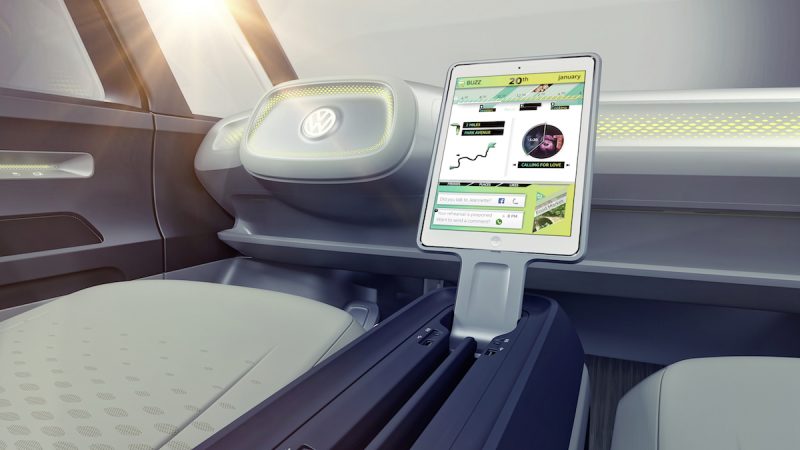
The I.D. Buzz name is meant to highlight Volkswagen's artificial intelligence efforts for its cars. The car's AI, called I.D., can tell who the driver is and change the internal settings, from the seat position to the music that plays, accordingly.
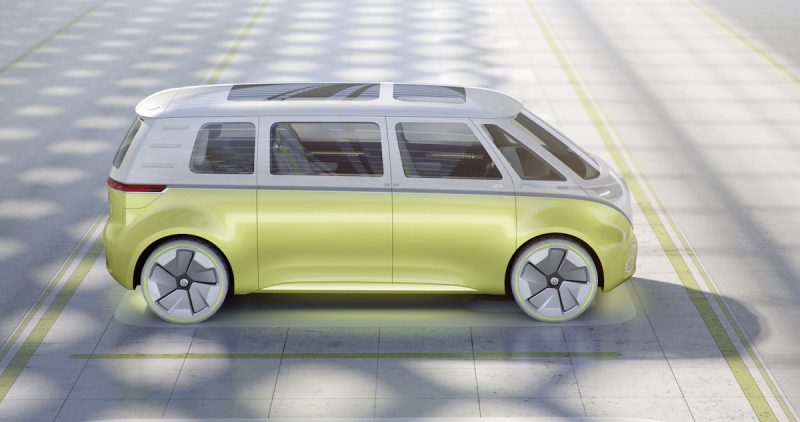
Toyota unveiled a concept car at this year's CES showing its AI efforts. The car came with an AI assistant named Yui that Toyota says can read human emotions.
I.D. can also sync up to the driver's smartphone to create a digital key. Once I.D. picks up that digital key, the doors will open and ambient lighting will turn on.
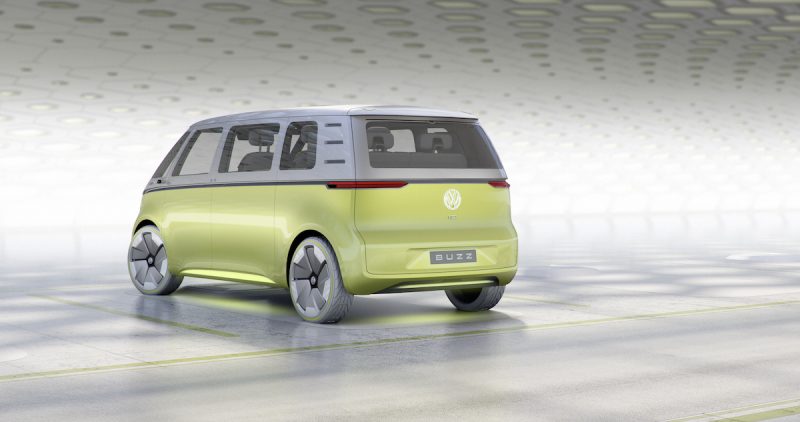
From a design perspective, Volkswagen said it purposely stepped away from the microbus' retro roots to create something with a smooth and integrated exterior.
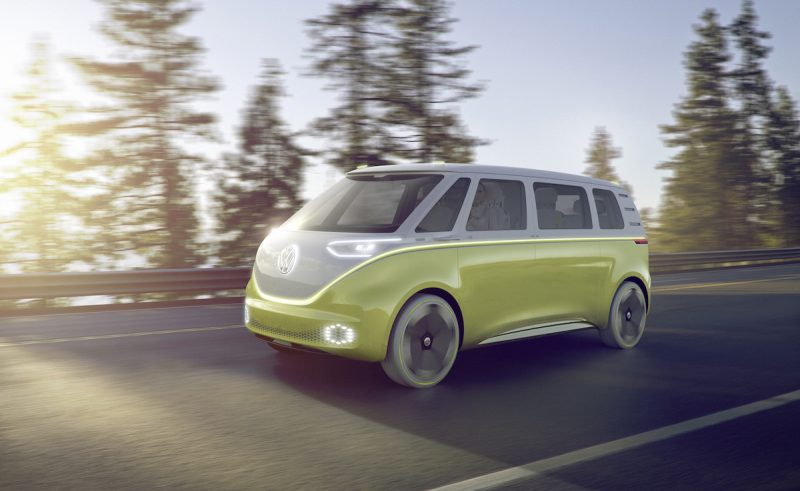
The bus comes with slender lights instead of the classic oval ones.
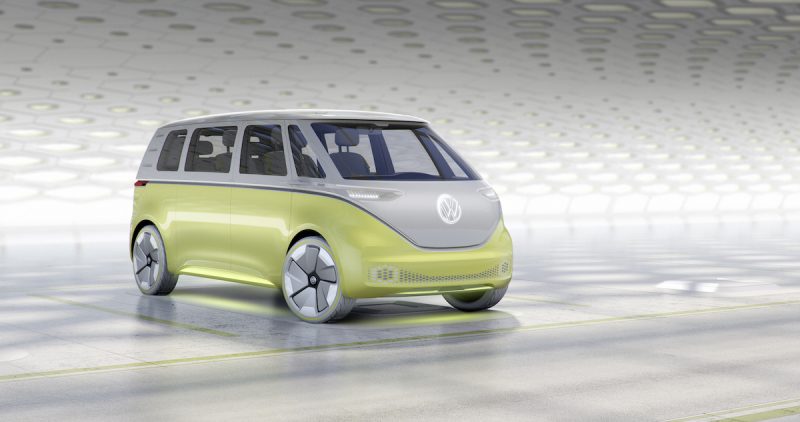
It also has wraparound LED tail lights, integrated bumpers, and cameras instead of sideview mirrors.
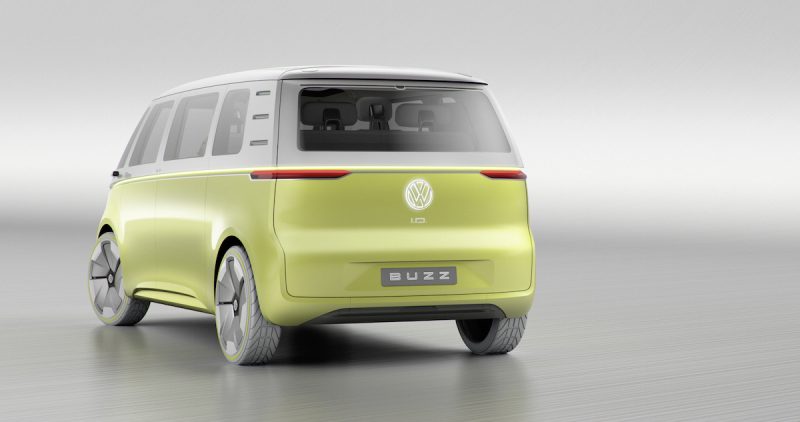
As mentioned before, the interior is extremely spacious at 194.6 inches long and 77.8 inches wide. The seats can move on a rail system attached to the wood floors, opening up space for a fold out table for people in the back.
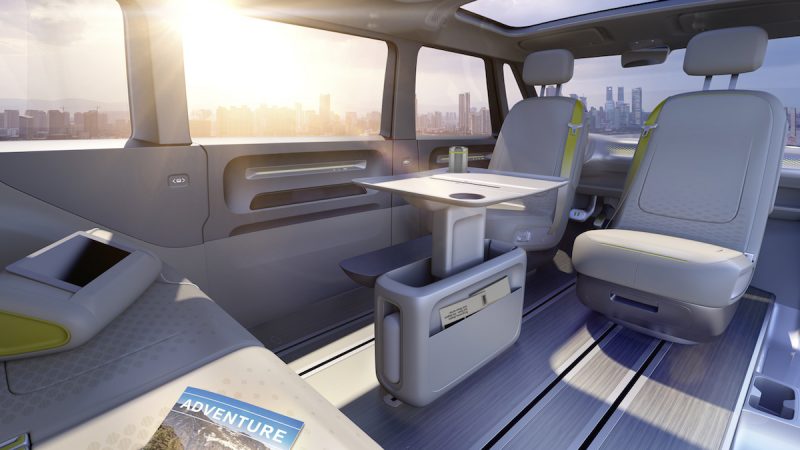
Volkswagen says the concept comes with two electric motors with 369 hp. The vehicle is capable of accelerating from 0-60 mph in 5 seconds and has a top speed of 99 mph.
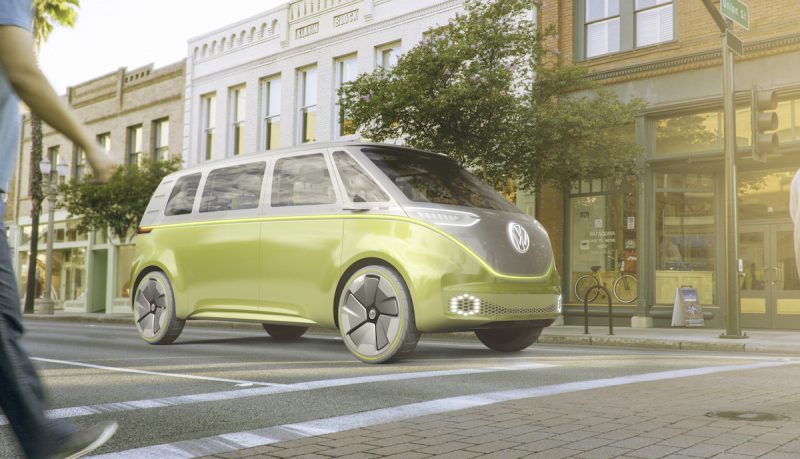
Volkswagen hasn't said whether we can expect a production version of this exact microbus concept. But this is the second time Volkswagen has played with an electric version of its classic microbus as it readies to ramp up its electric car efforts.
